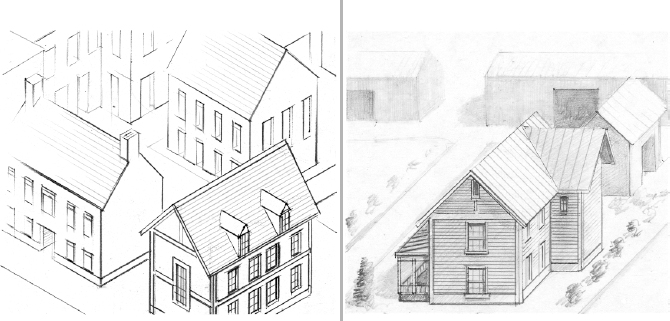12
AERIAL PERSPECTIVE
Aerial perspective is the effect of atmosphere on the perception of depth and distance. As particulate matter in the air gradually builds up over distance, the light reflecting off a particular object is filtered out to a greater or lesser degree. As a result, bright objects become duller and sharp edges become less distinct. At the same time, changes occur in the hue and saturation of colors.

Even on a relatively clear day, the mere accumulation of atmospheric density can signal to the viewer that one object is farther away than another.
Without regard to the linear perspective of a scene, the clarity of lines and surfaces alone can suggest their relative position in space (see page 7).

As a compositional tool, aerial effects can also be used to focus attention on one area while subduing another by fogging out secondary and peripheral areas and objects.

HOW AERIAL PERSPECTIVE WORKS
Any sort of particulate matter in the air, from dust to raindrops to snow, will block the light bouncing off an object, limiting what reaches the eye.

The closer together these particles ...
Get Basic Perspective Drawing: A Visual Approach, 5th Edition now with the O’Reilly learning platform.
O’Reilly members experience books, live events, courses curated by job role, and more from O’Reilly and nearly 200 top publishers.

